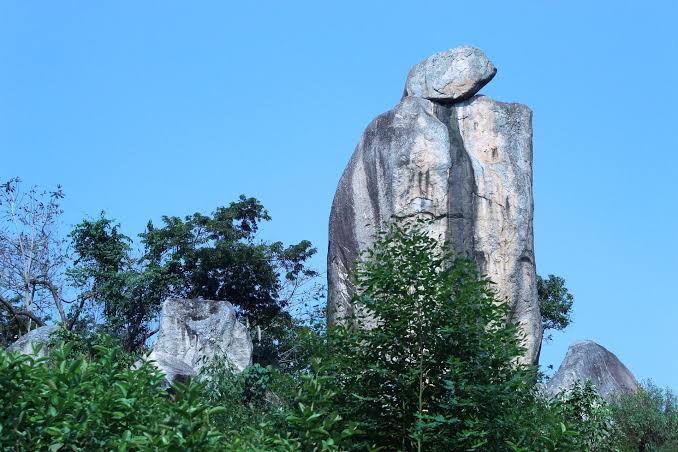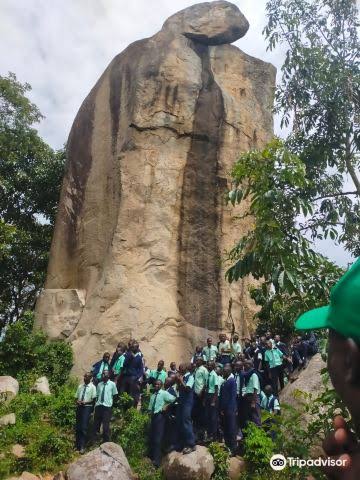Nestled amidst the lush landscapes of Kakamega County in Kenya lies a geological marvel that has captured the imagination of locals and travelers alike for generations – the Crying Stone. This intriguing rock formation, with its peculiar shape and legendary tales, has become an iconic symbol of the region’s natural beauty and cultural heritage.
The Crying Stone, known locally as Ikhongo Murwi, derives its name from the Luo and Luhya communities, who believe that the rock sheds tears during times of drought or impending disaster. This folklore has been passed down through oral tradition, contributing to the mystique surrounding the site.

Geologically, the Crying Stone is a massive granite outcrop that stands approximately 70 feet tall, resembling a human face with tears streaming down its weathered surface. Its distinctive features have drawn comparisons to iconic landmarks such as the Old Man of the Mountain in New Hampshire, USA, and the Sphinx in Egypt, albeit on a smaller scale.
Beyond its geological significance, the Crying Stone holds cultural and spiritual importance for the local communities. It serves as a sacred site for rituals and ceremonies, where prayers are offered for rain during dry seasons and blessings are sought for bountiful harvests. The rock is also believed to possess healing powers, with visitors touching its surface in hopes of receiving divine intervention for ailments or troubles.

In addition to its spiritual significance, the Crying Stone has become a popular tourist attraction, drawing visitors from far and wide to marvel at its unique form and learn about the rich cultural heritage of the region. Guided tours are available for those interested in exploring the surrounding area, which is home to diverse flora and fauna, including rare species of birds and butterflies.
Efforts have been made to preserve and protect the Crying Stone and its surrounding environment, recognizing its ecological importance and cultural value. Conservation initiatives aim to mitigate human impact on the site while promoting sustainable tourism practices that benefit the local communities.

Visiting the Crying Stone offers a glimpse into Kenya’s natural wonders and cultural traditions, providing a profound experience that resonates with visitors long after they depart. Whether viewed through the lens of geology, spirituality, or cultural significance, the Crying Stone stands as a testament to the enduring connection between humanity and the natural world.




